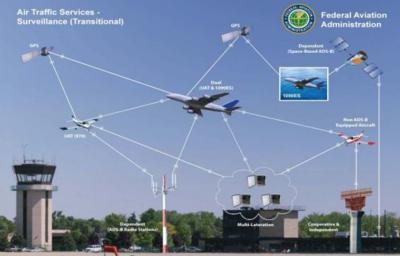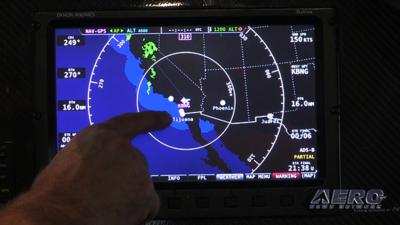Awarded A $1.8 Billion Contract In 2007 For ADS-B Infrastructure
As the prime contractor responsible for the FAA's execution of the Automatic Dependent Surveillance-Broadcast (ADS-B) program, Exelis says it is delivering surveillance coverage requirements on budget and on schedule. ADS-B is the cornerstone pillar of the FAA’s NextGen initiative to modernize the U.S. air traffic control system.

Awarded to Exelis in 2007, the 18-year, $1.8 billion contract is for the design, deployment and operation of nationwide ADS-B ground infrastructure. The system uses satellite-based technology, including GPS, and the ADS-B network of ground stations to transmit aircraft position information more frequently and accurately than ground-based radars.
Exelis says it has delivered the required network of ADS-B ground stations and has provided service delivery on budget and on schedule, meeting every major contract milestone. The deployed system is being operated and maintained by Exelis under FAA supervision which meets and/or exceeds the FAA’s requirements for high-performance surveillance and aviation safety services, and has been verified through extensive flight testing.
Under the program, the company has deployed 634 complex ground stations across the continental United States and in locations in Alaska, Guam, Hawaii, Puerto Rico, Virgin Islands, and approximately 200 service delivery points in FAA air traffic control facilities.
Recent media reports citing “coverage gaps” and the necessity for some additional 200 ground stations are not part of the core ADS-B program requirements and refer instead to extended coverage beyond the baseline program. The extensions are intended to bring coverage to airspace not currently served by radar. The ADS-B contract has a baseline requirement to provide coverage comparable to radar rather than a certain number of ground stations. Exelis says it has exceeded the coverage requirement while remaining well within the contracted cost.
Deployment of the ADS-B system in areas not previously covered by radar has already provided specific safety and efficiency benefits to the U.S. transportation industry including:
- Establishment of an ADS-B-only route over the Gulf of Mexico, which resulted in approximately nine minutes reduction in flight time between southern Florida and California.
- Decrease in accident rate of over 35 percent for ADS-B-equipped aircraft over non-equipped aircraft in Alaska.
- Increase of over 300 percent for IFR (Instrument Flight Rules) low-altitude traffic in the Gulf of Mexico since 2009 as a result of ADS-B coverage.

Excelis says the ADS-B system is safe, secure and fully redundant. The system has executed the National Institute for Standards & Technology-based security authentication and certification program throughout its design, implementation and operation. Accreditation recognizes that the system has substantial information security features built in, including multiple stages of certification, encryption and testing used to ensure the accuracy of all data transmitted to the FAA, air traffic controllers and pilots.
Airline adoption of the nationwide ADS-B technology will improve the safety, capacity and efficiency of the U.S. aviation industry, while accommodating future commercial air transport growth. NextGen reduces flight delays, fuel use and carbon emissions and most importantly, improves system-wide safety for air passengers.
 ANN's Daily Aero-Linx (05.06.25)
ANN's Daily Aero-Linx (05.06.25) ANN's Daily Aero-Term (05.06.25): Ultrahigh Frequency (UHF)
ANN's Daily Aero-Term (05.06.25): Ultrahigh Frequency (UHF) ANN FAQ: Q&A 101
ANN FAQ: Q&A 101 Classic Aero-TV: Virtual Reality Painting--PPG Leverages Technology for Training
Classic Aero-TV: Virtual Reality Painting--PPG Leverages Technology for Training Airborne 05.02.25: Joby Crewed Milestone, Diamond Club, Canadian Pilot Insurance
Airborne 05.02.25: Joby Crewed Milestone, Diamond Club, Canadian Pilot Insurance




